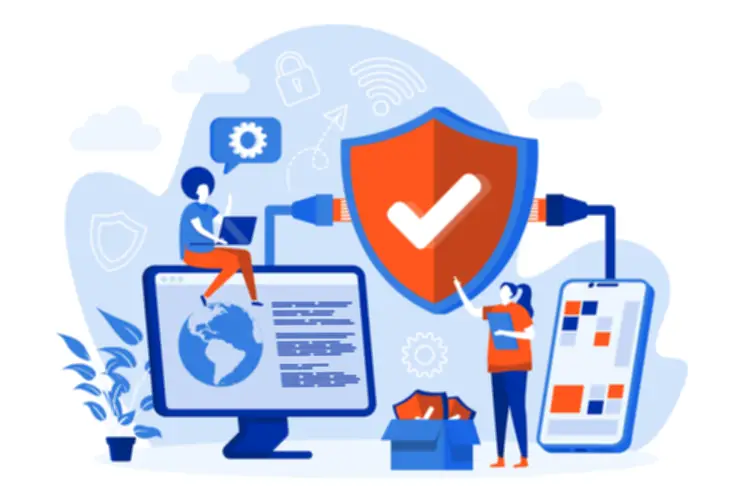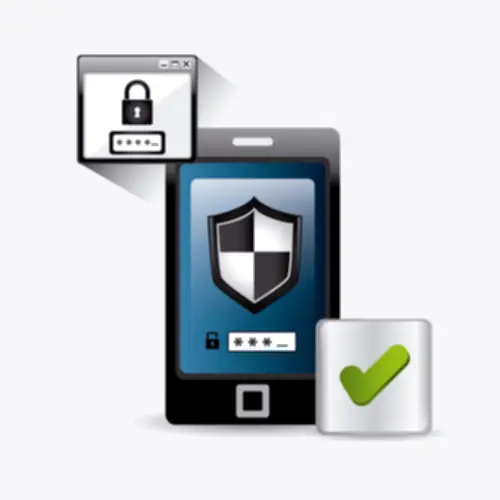The 10 Best Practices in Mobile App Security

According to the statistics provided by the CPO Magazine, up to 71% of all fraud transactions in 2018 came from mobile applications and browsers. This shows that security is a very important issue and developers simply cannot ignore it.

Only in Google Play, there are more than 2.8 million mobile apps. Each day, dozens of new software are created. Most of them use various security approaches to make sure the data of their users is completely protected.
Top-10 security approaches in mobile applications
Developing hack-free software is always difficult. However, things get much easier when you see some examples of what other developers use.

We are confident that we have what it takes to help you get your platform from the idea throughout design and development phases, all the way to successful deployment in a production environment!
1. Write a secure code
The very first thing you must do is write a code that is not vulnerable in any way. Hackers often tend to use the simplest bugs to break into the app, so you have to be very attentive with your work.
Some of the tips are:
- Think about security since the very beginning;
- Obfuscate and minify the code;
- Regularly test your code and fix all the bugs at once;
- Ensure the code can be easily updated in the future;
- Do not ignore code hardening and signing.
These few steps are not that simple to follow, but they make sure your code is as secure as possible.
2. Encrypt all the data
Using encryption for every single piece of data makes it difficult for hackers to break into your application. In simple words, you should make sure that the clean code turns into a mixture without any meaning for all the people without the key.
The power of encryption is easily seen when you hear about the FBI asking Apple or other companies to provide them the keys or help with decryption of the software. If the FBI cannot break into protected applications, hackers definitely can’t do that too. At least, it seems to be so.
3. Perform regular penetration tests
Before each update, it is recommended that you use various security scenarios to find any flaws in the system. This will help you to detect any loopholes and fix them before a potential hacker uses them for their own reasons.
4. Use SSL or VPN tunnels
Sometimes, hackers intercept the data when it is sent from the client to the server. Although encryption should help here, it is better to use an SSL or VPN tunnel to make things even more difficult for them. This will minimize privacy leaks and data theft.
5. Be very careful with libraries
Many developers use third-party libraries, but not all of them check their security. You can never trust a code that is not written by you (in fact, you cannot trust your own code too!), so you should be extra careful. Perform several tests before using any.
An example is the GNU C Library. It had a security flaw that was undiscovered for more than 7 years. This lets attackers easily include malicious code and crash the whole system.
6. Authorized APIs only
You cannot use just any API. Some of them might have a number of flaws in their code, and this may be fatal for your application.
For example, the authorization information can be cached locally and this will let programmers reuse it when they make API calls. At the same time, hackers get a loophole that lets them perform any action they need.
7. Use the latest cryptographic techniques
The security requirements are always increasing, so even the safest algorithms like MD5 or SHA1 are often not enough. It is crucial that you regularly check for updates. Also, it is recommended that you use encryption algorithms like AES 512-bit and others.
Finally, never forget about all kinds of penetration tests. You can perform manual or automated attempts to break into the system to find out any existing breaches. This way, you will make sure that the app is safe enough to use.
8. Use tamper-detection software
Tamper-detection software will inform you about an attacker trying to add malicious code in your application. The software will make the code unusable if any changes appear, so it is a good way to protect your app.
9. High-level authentication
When there is no high-level authentication, it makes things much easier for hackers to break into the app. Using strong alphanumeric passwords and forcing the users to change their password regularly can enhance the security of the software.
On top of that, you can also add biometric authentication. Using fingerprints or face scans will, in most cases, make the usage easier for the user and more difficult for the attacker.
10. Do not request for too many permissions
The code of your application should be able to run by only using the permissions it requires. For instance, your app needs access only to the camera and storage. Requesting permission to the user’s contacts is already unnecessary because the application performs all its functions without it.
When there are too many useless network connections, this increases the risks of new breaches and also puts more data in danger. Therefore, make sure your application only gets the permissions it needs to fulfill its tasks.
Why should you use these security practices
No matter what type of mobile application you develop, security must never be neglected. When you create an app, you become responsible for all the data it collects and how safe it is. This especially relates to software that works with finances or private information.
Moreover, if your apps are not secure, it is likely that they will not be available on Play Market, App Store, or any other software marketplace you use. People also will not trust anything with security breaches, so this will lower your audience.
Is this a full list of suggestions?
There are so many security issues that it is hard to gather each of them in one place. The list above covers only a small part of all the suggestions. If we were to create a complete guide, it would have taken a whole book before the topic would be covered 100%.
However, some of the basic things are:
- Use encryption and make it hard to hack into the code in any way;
- Perform regular penetration tests;
- Add only the required parts and do not ask for more than the app needs.
If you follow these simple steps, you can be sure that your software will be always protected from attackers.

The bottom line
Security for mobile apps is a must-have in 2020. Ignoring this part is a very bad idea for developers of any kind. The safer your software is, the more people will be willing to use it. Moreover, we are sure you do not want to be in the news headlines about your app being hacked. Follow the tips from above and everything will be fine!
Top Articles
Container vs VM (Virtual Machines): How Do They Differ?
I am here to help you!
Explore the possibility to hire a dedicated R&D team that helps your company to scale product development.






